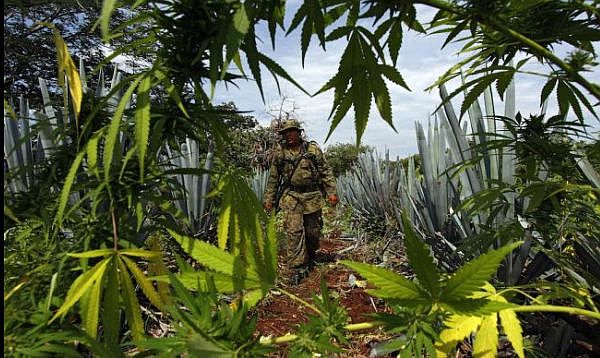Mexico City — As President Barack Obama trumpets that the United States economy is back on track, industry groups are shouting over who's growing faster.
The accounting sector boasted 2014 growth of 11%; computer systems of 14%; and real estate of a whopping 23 percent, says financial information group Sageworks.
However, one industry may have beaten those hands down: legal marijuana.
According to a new report by The ArcView Group, a cannabis industry investment and research firm based in California, legal marijuana sales rocketed 74% in 2014 to a new high of $2.7 billion. And with more states legalizing weed — Alaska, Oregon and Washington, DC, voted to join the legal stoners in November — it predicts this growth pace could continue for several more years straight.
However, winners in some places often mean losers in others. And the losers appear to be south of the Rio Grande: Mexican marijuana growers, who've provided the lion's share of cannabis for American smokers for decades.
In 2014, the US Border Patrol saw a plunge in seizures of pot heading northward. Its agents nabbed 1.9 million pounds of ganja, a 24 percent reduction compared with the 2.5 million seized in 2011 — before Colorado and Washington State first voted to legalize recreational marijuana.
 |
Mexican security forces have also noted a dive in marijuana production. In the most recent figures released in September, the Mexican government said that it had seized 971 metric tons (1,070 US tons) of cannabis inside Mexico in 2013, the lowest amount since 2000.
"In the long run, it looks like the US market for illegal Mexican marijuana will keep shrinking," says Alejandro Hope, a drug expert in Mexico. "The logic of the legal marijuana market is that it will force prices down. This would take out the big profits from the illegal market. A good way to make some money could be to short the prices of marijuana."
As well as price problems, Mexican producers also have to compete with quality.
The legal US suppliers focus on high-grade weed, selling brands with glamorous names like "Skunk Red Hair," "Sky Dog" and "Super Haze" in the S section of the shelves, to "Hypno," "Hindu Kush" and "Himalayan Gold" if you look under H.
They are often labeled with their exact amount of THC, the ingredient that gets you intoxicated. They are also graded for their mix of indica, the strain that makes users stoned in a more knockout way, and sativa, which hits people in a more psychedelic way.
On the other hand, Mexican marijuana, known here as "mota," is a mass-produced lower-grade crop, grown mostly outdoors in the mountains. It doesn't have a fancy brand name, or tell you how spaced out or sleepy you will feel; it will just get you wasted.
Read more at GlobalPost.com.


